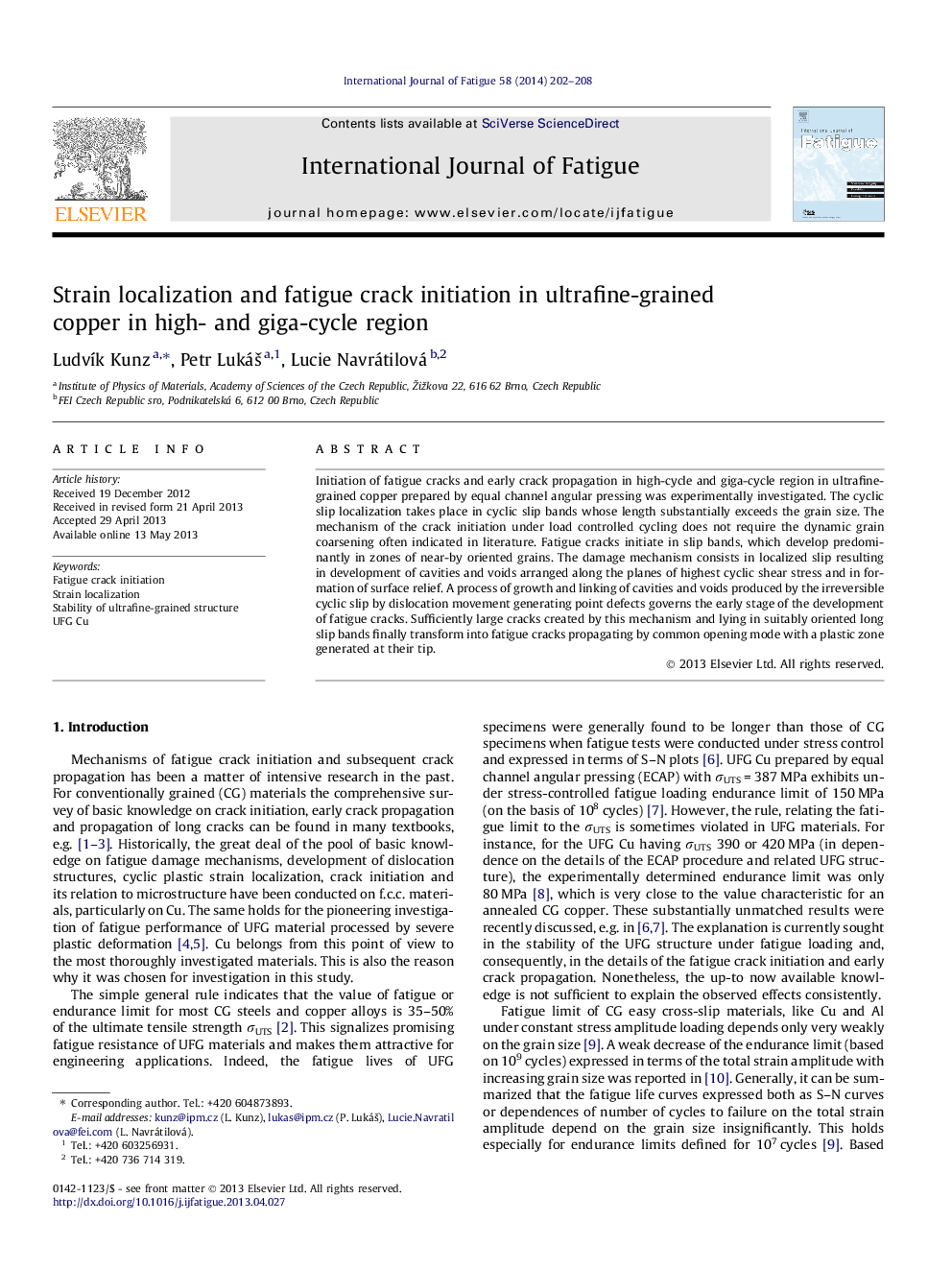| Article ID | Journal | Published Year | Pages | File Type |
|---|---|---|---|---|
| 780792 | International Journal of Fatigue | 2014 | 7 Pages |
•FIB technique was applied to reveal the structure of fatigue slip bands.•Mechanism of fatigue crack formation in giga-cycle fatigue was described.•Dynamic grain coarsening is not a prerequisite for fatigue crack initiation.•S–N curve in broad range of number of cycles to failure was determined.
Initiation of fatigue cracks and early crack propagation in high-cycle and giga-cycle region in ultrafine-grained copper prepared by equal channel angular pressing was experimentally investigated. The cyclic slip localization takes place in cyclic slip bands whose length substantially exceeds the grain size. The mechanism of the crack initiation under load controlled cycling does not require the dynamic grain coarsening often indicated in literature. Fatigue cracks initiate in slip bands, which develop predominantly in zones of near-by oriented grains. The damage mechanism consists in localized slip resulting in development of cavities and voids arranged along the planes of highest cyclic shear stress and in formation of surface relief. A process of growth and linking of cavities and voids produced by the irreversible cyclic slip by dislocation movement generating point defects governs the early stage of the development of fatigue cracks. Sufficiently large cracks created by this mechanism and lying in suitably oriented long slip bands finally transform into fatigue cracks propagating by common opening mode with a plastic zone generated at their tip.
